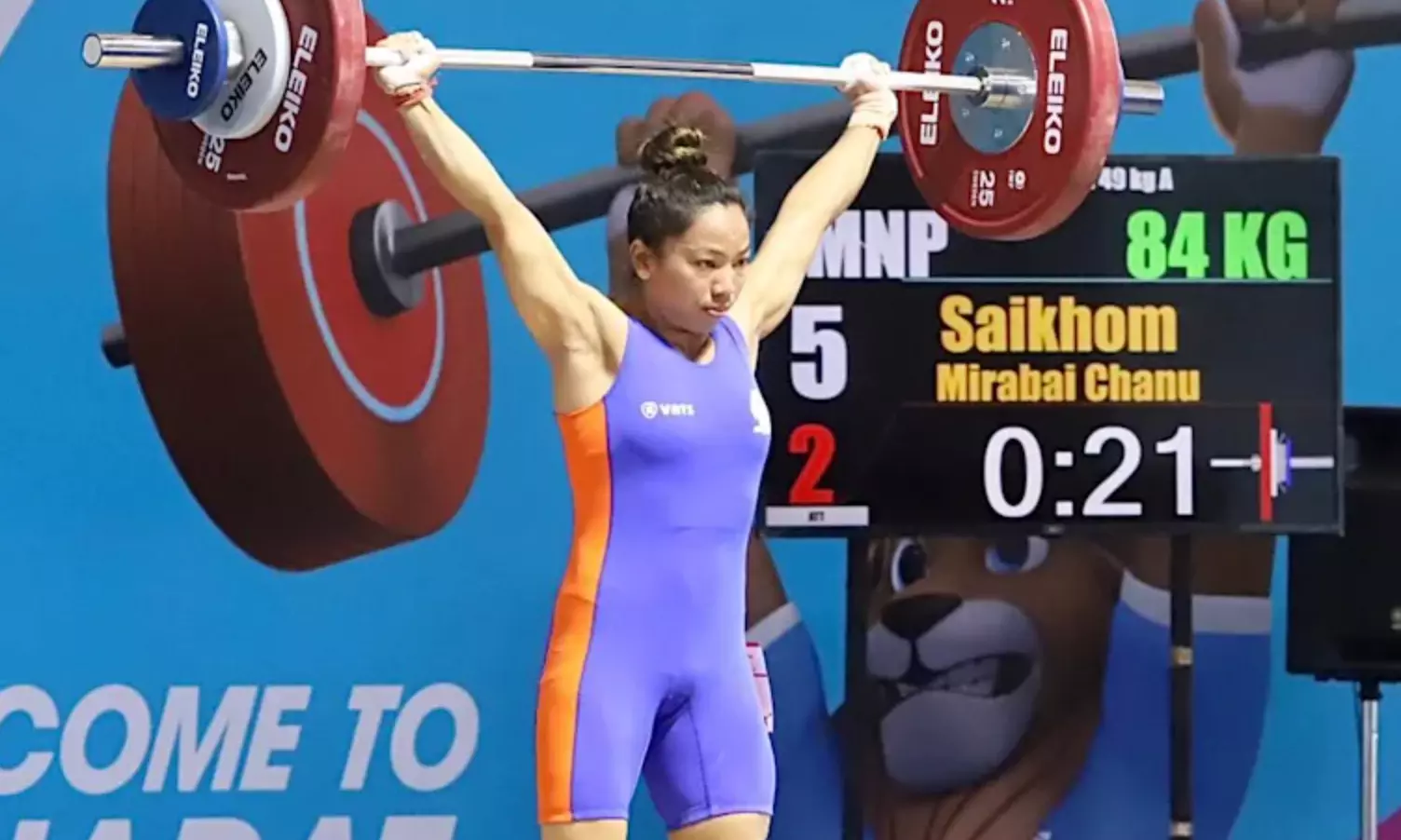Sports Training
Why athletes need the off-season to stay on point
Both Neeraj Chopra and Ravi Dahiya have started their off-season training, but with different priorities. But overall, the way the off-season is planned in India puts an unnecessary toll on athletes - especially developing ones.

FILE PHOTO: Mirabai Chanu in action during an event. (Photo credit: SAI)
For every sport, competition and season, there is an ending. It is this ending that also marks the start of the next season's preparations. In the sports colloquial terminology, it is known as the 'off-season'. During this time, athletes tend to their injuries, recover mentally and begin planning and training for the next season.
If done properly, the off-season is a critical practice period that can return dividends. It allows time for an athlete to build muscle mass, increase mobility and work on any of their shortcomings with specific training modules.
However, the duration of this off-season is different for every sport and also varies individually from athlete to athlete.
India's golden boy Neeraj Chopra has started his off-season training for the javelin throw at the Loughborough University in the United Kingdom. For Chopra, the first step is to return to his training weight before beginning his sport-specific training.
This will be followed by mobility and strength training before transitioning into exercises specific to his discipline.
Wrestler Ravi Dahiya, on the other hand, is training at the Chhatrasal Stadium in New Delhi. His primary focus during the off-season is to completely heal his knee injury. Dahiya is also mindful of his weight in the off-season as the Olympic silver medalist cuts nearly eight kilograms to make the competition weight of 57kg.
In athletics, the off-season generally begins in October and can last until February or March. Wrestling has a two-month window, while boxing can have a three-month window.
What exactly do athletes do in the off-season?
Athletes are constantly developing their skills and they usually return to the basics during the off-season. This enables them to strengthen their foundation and systems before adding new layers to them, which will give them an edge over their competitors.
For example, the body's aerobic system supplements energy with oxygen. It is responsible for replenishing the anaerobic system, i.e. energy in absence of oxygen. As an athlete, it is important to strengthen both aerobic and anaerobic health in the off-season. Doing so will promote faster recovery and produce better results during competitions.
The most common practice in achieving this is high-altitude training. Ooty is one of the favourite places for track athletes to complete their off-season training. Training at heights improves the cardiovascular system by increasing the red blood cell (RBC) count.
This general training is the initial part of their off-season training. As the preparatory competition phase nears, the focus is more on sport-specific exercises. The athlete redirects their focus back on to their sport by maintaining the same intensity but decreasing the duration.
Athletes reintroduce their bodies to the old exercises and ease the transition back into season form. All of this allows for the athletes' bodies to be competition-ready.
How is the off-season in India different from other countries?
India's sporting calendar gives no time for athletes to enter their off-season.
In athletics, most athletes had already entered their off-season right after the Diamond League Final in Zurich in September. But the stakeholders in India still decided to hold the National Games.
Athletes were forced to compete in them risking injuries and extending their already lengthy season. To make things worse, athletes who are part of the national camp were then asked to partake in one more competition.
READ | Fractured rib, damaged knee not a problem for Tulika Maan at National Games
In the wrestling field, the Wrestling Federation of India decided to organise this year's Senior National Championship from December 21 to 23. This is after multiple Senior Grand Prix and Federation Cup meets. Many top wrestlers entered this competition with injuries, thereby reducing their chances for a medal.
Boxing too is in shambles. The Elite National Championships for Women and Men, which were supposed to take place in October and November respectively, were pushed to the end of December. This unnecessarily extended the season for the boxers and will also spoil their preparations for 2023, an Olympic Qualification year.
In between these marquee events, there are universities forcing athletes to compete in inter-university meets and individual states asking athletes to represent them at Khelo India. Both of these competitions are organised by separate stakeholders and are hence never a part of the standard national calendar. These place the off-season preparations of the athletes in limbo.
While elite athletes are given exemption from these competitions, it is the developing group that suffers the most because of the inconsistent calendar.
Given the circumstances, Indian sports stakeholders must have a more holistic approach when they sit down to design a season calendar. All of the entities must be invited in order to create a calendar that is both mindful of the training schedules of the athletes and prioritises their well-being, subsequently improving the country's sporting ecosystem as a whole.
